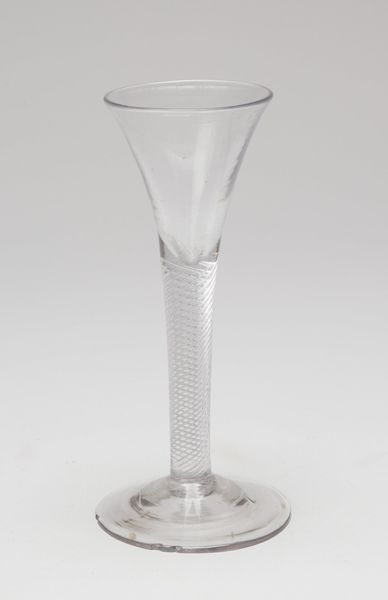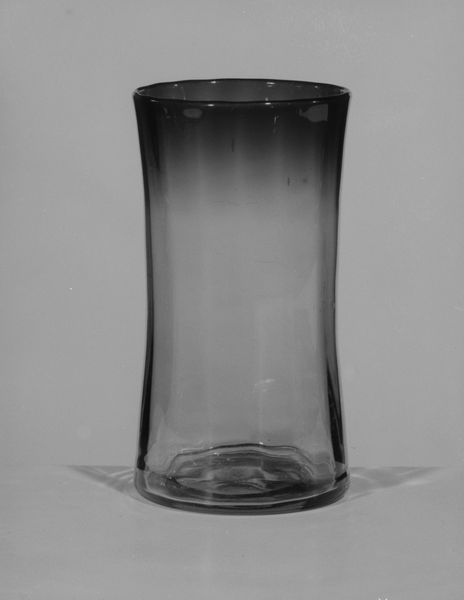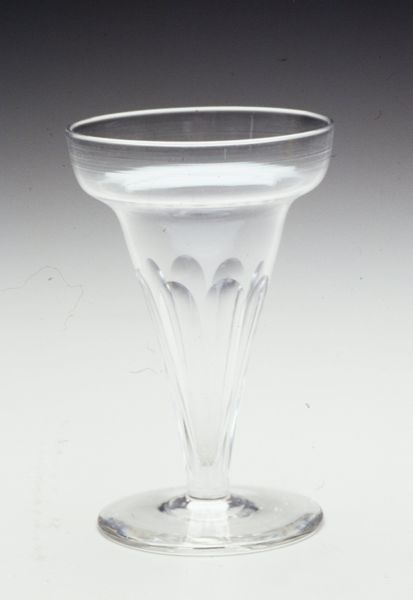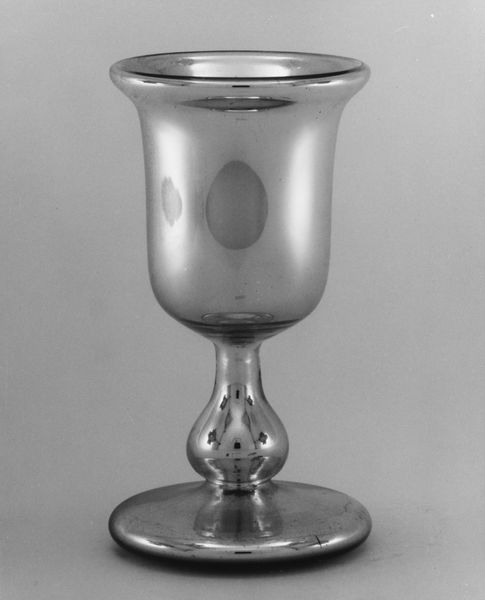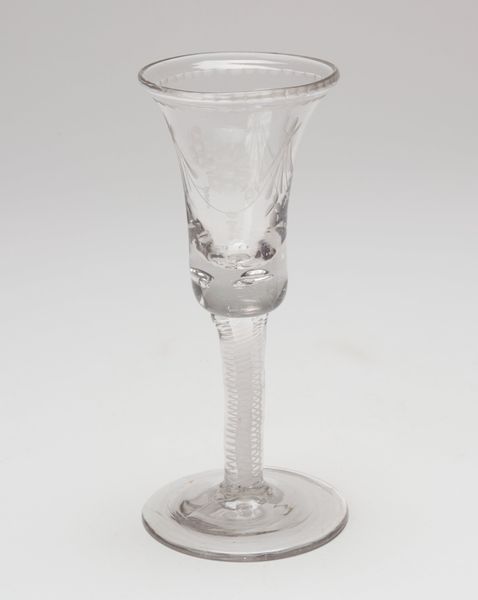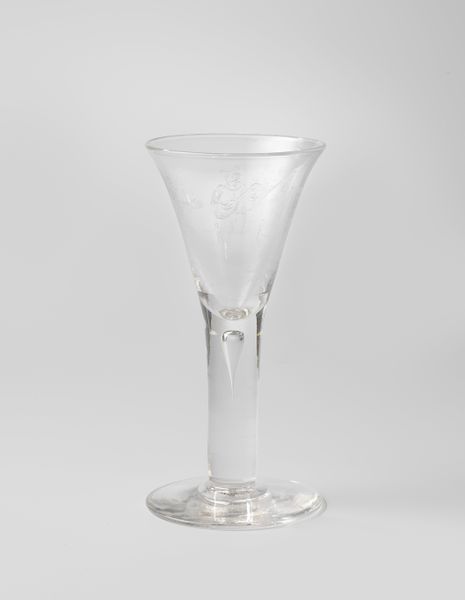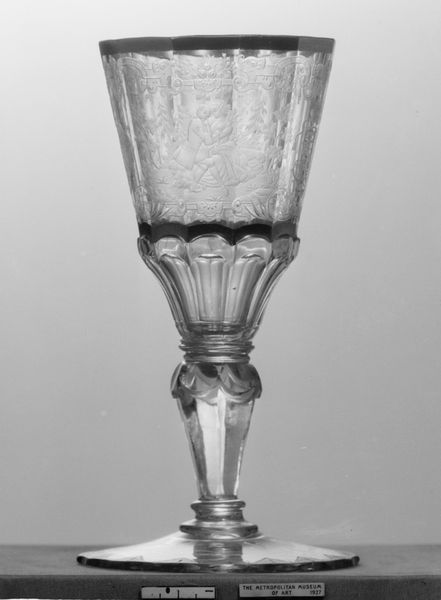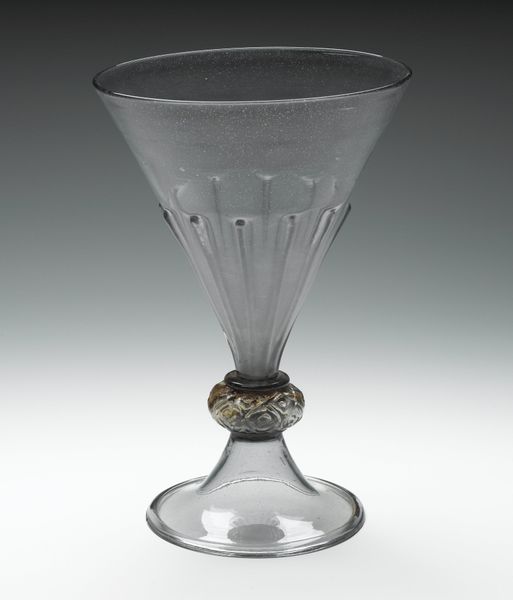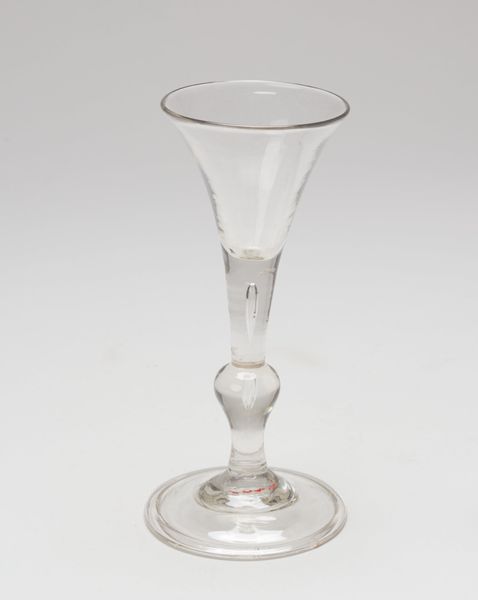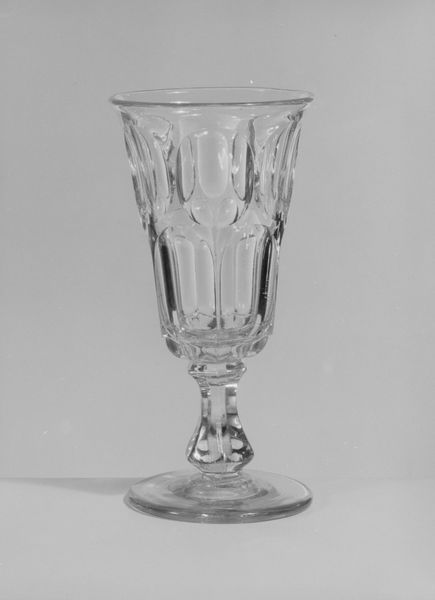
photography, glass
#
photography
#
glass
#
united-states
#
decorative-art
Dimensions: H. 4 3/8 in. (11.1 cm)
Copyright: Public Domain
Curator: This is a photograph of a sherry glass, crafted by the New England Glass Company between 1885 and 1888. It's currently held in the collection of the Metropolitan Museum of Art. Editor: Well, my initial impression is one of surprising austerity. Given the era, and the object itself, I would have expected something much more ornamented. There's almost a minimalist quality to it, despite its obvious vintage. Curator: The very deliberate geometry stands out, doesn't it? The conical bowl flowing seamlessly into the slender stem, and finally resting on a perfectly round base. Each component contributes to an overall sense of visual harmony, a formal investigation of line and shape. Editor: Agreed, but it's fascinating to consider the context of its production. The New England Glass Company operated during a time when American glassmaking was undergoing significant changes, influenced by European styles but also developing its own distinct character. Mass production techniques were becoming more prevalent. Is this perhaps a product of that shift, where function dictated form in a new way? Curator: Precisely. We could argue that the simplicity is its own statement, resisting excessive decoration and instead highlighting the inherent beauty of the material. Look at how the light plays on the surface of the glass – subtle refractions, gradations of tone that amplify the sculptural quality. The object becomes an exploration of transparency and form. Editor: Yes, and this brings to mind issues of class and consumerism. Who owned such glasses, and how were they perceived? Serving sherry was often part of specific social rituals. So this glass isn’t just an object; it’s a prop in a social drama, representing both refinement and established hierarchies. Curator: The elegance implies an aspirational quality for certain social strata within America during the Gilded Age. However, the functional element cannot be ignored—it is still essentially a drinking vessel. This duality keeps the work intriguing, a balance between utilitarianism and high design. Editor: It is compelling how a humble vessel encapsulates larger cultural narratives and questions of aesthetic purpose. Curator: A brief observation, but one that resonates, suggesting larger concerns for a relatively minor object.
Comments
No comments
Be the first to comment and join the conversation on the ultimate creative platform.
